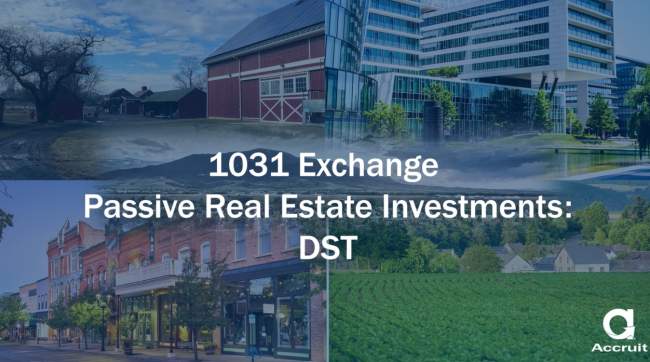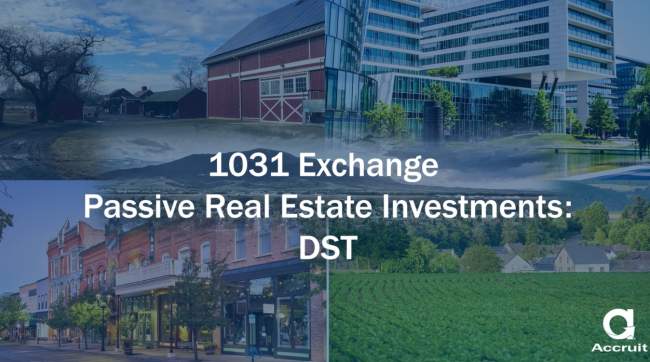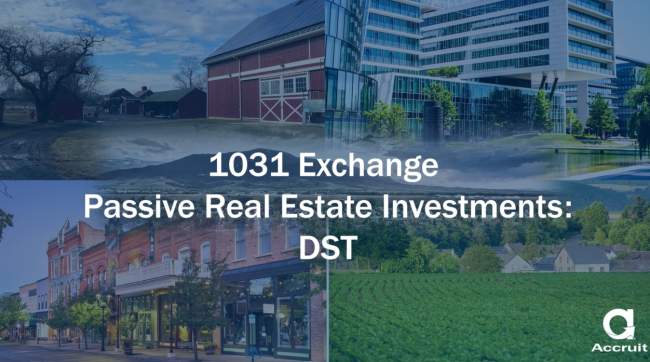Can Exchangers go beyond the 180-day timeline in a reverse exchange? The short answer is yes, but only under specific conditions. To extend the timeline, the transaction must be structured as a “Non-Safe Harbor” Specialty Reverse Transaction. In this structure, an Exchange Accommodation Titleholder (EAT) holds the title to the property, typically the Replacement Property, within a Special-purpose Entity (SPE). Standard Reverse Exchanges, which follow IRS safe harbor rules, do not allow for this extension.
Exceptions to the 180-day limit are often discussed in the context of parking arrangements, where practical challenges like delays in injecting exchange value into property improvements can arise. While case law and tax authority support extending parking arrangements under an EAT in certain scenarios, it’s important to note that once the Relinquished Property is sold, the forward exchange timeline begins, and the strict 180-day limit to acquire Replacement Property applies.
In this educational video, understand how these exceptions work in specific Reverse 1031 Exchange strategies.
Category: Video Series 1031 University
-

Video: Can You Exceed 180 Days in a Reverse Exchange?
-

Video: What are “Drop & Swaps” in a 1031 Exchange?
A Drop & Swap is a strategy used in 1031 Exchanges when an investment property is owned by a multi-member partnership or LLC, and not all partners share the same financial or investments plans for the proceeds from the sale of the property. While some partners may want to defer all taxes that would otherwise be associated with the transaction, by conducting a 1031 exchange, others might prefer to cash out and pay associated taxes. This difference in plans for the proceeds creates a challenge, as the https://www.accruit.com/blog/same-taxpayer-requirement-1031-tax-deferre… Taxpayer Rule dictates that the same individual or entity selling the Relinquished Property must also be the one to acquire the Replacement Property(ies) to meet the requirements for tax deferral.
In our latest educational video, we explore how a Drop & Swap can be structured to address these situations, when this strategy is most effective, and key considerations Exchangers should keep in mind to ensure compliance.
-

Video: What are “Drop & Swaps” in a 1031 Exchange?
A Drop & Swap is a strategy used in 1031 Exchanges when an investment property is owned by a multi-member partnership or LLC, and not all partners share the same financial or investments plans for the proceeds from the sale of the property. While some partners may want to defer all taxes that would otherwise be associated with the transaction, by conducting a 1031 exchange, others might prefer to cash out and pay associated taxes. This difference in plans for the proceeds creates a challenge, as the https://www.accruit.com/blog/same-taxpayer-requirement-1031-tax-deferre… Taxpayer Rule dictates that the same individual or entity selling the Relinquished Property must also be the one to acquire the Replacement Property(ies) to meet the requirements for tax deferral.
In our latest educational video, we explore how a Drop & Swap can be structured to address these situations, when this strategy is most effective, and key considerations Exchangers should keep in mind to ensure compliance.
-

Video: What are “Drop & Swaps” in a 1031 Exchange?
A Drop & Swap is a strategy used in 1031 Exchanges when an investment property is owned by a multi-member partnership or LLC, and not all partners share the same financial or investments plans for the proceeds from the sale of the property. While some partners may want to defer all taxes that would otherwise be associated with the transaction, by conducting a 1031 exchange, others might prefer to cash out and pay associated taxes. This difference in plans for the proceeds creates a challenge, as the https://www.accruit.com/blog/same-taxpayer-requirement-1031-tax-deferre… Taxpayer Rule dictates that the same individual or entity selling the Relinquished Property must also be the one to acquire the Replacement Property(ies) to meet the requirements for tax deferral.
In our latest educational video, we explore how a Drop & Swap can be structured to address these situations, when this strategy is most effective, and key considerations Exchangers should keep in mind to ensure compliance.
-

Video: DSTs as Replacement Property in a 1031 Exchange
In our previous video on https://www.accruit.com/blog/video-1031-exchange-passive-real-estate-in… real estate investments, we discussed what passive real estate investments are, how they differ from active investments, the benefits they offer investors, as well as types of passive investments including Triple Net Leases (NNNs), Tenants-in-Common (TICs), and Delaware Statutory Trusts (DSTs). In this video, we take a deeper look at one of those passive real estate investment options: Delaware Statutory Trusts (DSTs).
A Delaware Statutory Trust (DST) is a legally recognized trust created under Delaware law. In a DST, investors, also known as beneficiaries, hold fractional “beneficial interests” in the trust, with their ownership percentage determined by their equity investment. DSTs provide a passive real estate investment opportunity, allowing investors to benefit from investment grade property that they generally could not access on their own without the burden of active management.
In this educational video, as well as this https://www.accruit.com/blog/delaware-statutory-trusts-1031-exchange-in…;, learn more about this hands-off investment strategy and how it offers diversification, passive income, and tax deferral without the complexities of direct property management. -

Video: DSTs as Replacement Property in a 1031 Exchange
In our previous video on https://www.accruit.com/blog/video-1031-exchange-passive-real-estate-in… real estate investments, we discussed what passive real estate investments are, how they differ from active investments, the benefits they offer investors, as well as types of passive investments including Triple Net Leases (NNNs), Tenants-in-Common (TICs), and Delaware Statutory Trusts (DSTs). In this video, we take a deeper look at one of those passive real estate investment options: Delaware Statutory Trusts (DSTs).
A Delaware Statutory Trust (DST) is a legally recognized trust created under Delaware law. In a DST, investors, also known as beneficiaries, hold fractional “beneficial interests” in the trust, with their ownership percentage determined by their equity investment. DSTs provide a passive real estate investment opportunity, allowing investors to benefit from investment grade property that they generally could not access on their own without the burden of active management.
In this educational video, as well as this https://www.accruit.com/blog/delaware-statutory-trusts-1031-exchange-in…;, learn more about this hands-off investment strategy and how it offers diversification, passive income, and tax deferral without the complexities of direct property management. -

Video: DSTs as Replacement Property in a 1031 Exchange
In our previous video on https://www.accruit.com/blog/video-1031-exchange-passive-real-estate-in… real estate investments, we discussed what passive real estate investments are, how they differ from active investments, the benefits they offer investors, as well as types of passive investments including Triple Net Leases (NNNs), Tenants-in-Common (TICs), and Delaware Statutory Trusts (DSTs). In this video, we take a deeper look at one of those passive real estate investment options: Delaware Statutory Trusts (DSTs).
A Delaware Statutory Trust (DST) is a legally recognized trust created under Delaware law. In a DST, investors, also known as beneficiaries, hold fractional “beneficial interests” in the trust, with their ownership percentage determined by their equity investment. DSTs provide a passive real estate investment opportunity, allowing investors to benefit from investment grade property that they generally could not access on their own without the burden of active management.
In this educational video, as well as this https://www.accruit.com/blog/delaware-statutory-trusts-1031-exchange-in…;, learn more about this hands-off investment strategy and how it offers diversification, passive income, and tax deferral without the complexities of direct property management. -

Video: Types of 1031 Parking Exchanges
This educational video breaks down parking exchanges and the critical role of the Exchange Accommodation Titleholder (EAT), who acquires and “parks” the property for a specific period. We cover the core types of parking exchanges, reverse and improvement exchanges, as well as touch on combination exchanges, such as reverse-improvement, and “Specialty Non-Safe Harbor” structures.
Watch to learn more about parking exchanges and how this type of 1031 Exchange can benefit Exchangers facing situations such as wanting to purchase their Replacement Property prior to selling their Relinquished Property or Exchangers looking to use Exchange Funds to make improvements to their Replacement Property via a Build-to-Suit/Improvement Exchange.
-

Video: Types of 1031 Parking Exchanges
This educational video breaks down parking exchanges and the critical role of the Exchange Accommodation Titleholder (EAT), who acquires and “parks” the property for a specific period. We cover the core types of parking exchanges, reverse and improvement exchanges, as well as touch on combination exchanges, such as reverse-improvement, and “Specialty Non-Safe Harbor” structures.
Watch to learn more about parking exchanges and how this type of 1031 Exchange can benefit Exchangers facing situations such as wanting to purchase their Replacement Property prior to selling their Relinquished Property or Exchangers looking to use Exchange Funds to make improvements to their Replacement Property via a Build-to-Suit/Improvement Exchange.
-

Video: Types of 1031 Parking Exchanges
This educational video breaks down parking exchanges and the critical role of the Exchange Accommodation Titleholder (EAT), who acquires and “parks” the property for a specific period. We cover the core types of parking exchanges, reverse and improvement exchanges, as well as touch on combination exchanges, such as reverse-improvement, and “Specialty Non-Safe Harbor” structures.
Watch to learn more about parking exchanges and how this type of 1031 Exchange can benefit Exchangers facing situations such as wanting to purchase their Replacement Property prior to selling their Relinquished Property or Exchangers looking to use Exchange Funds to make improvements to their Replacement Property via a Build-to-Suit/Improvement Exchange.